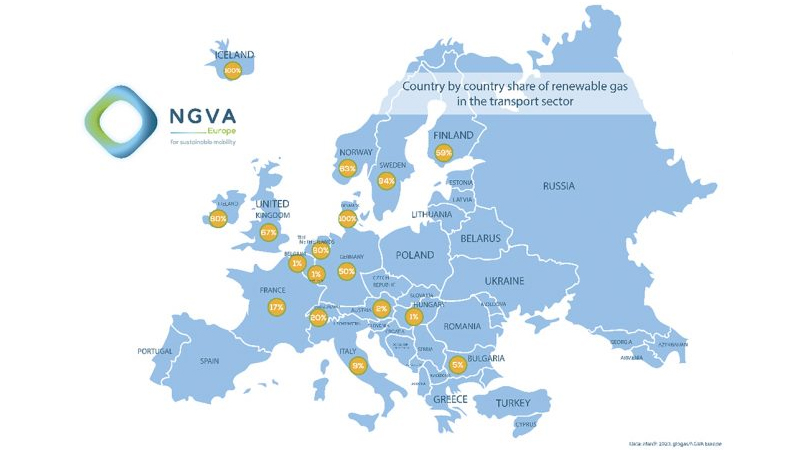Out of 4,120 compressed natural gas (CNG) and liquid natural gas (LNG) stations in Europe, approximately one-quarter are distributing a blend containing a variable share of biomethane. And, notes, NGVA Europe, “the system is completely flexible and ready to switch to 100% bio at any time, without any cost on the refueling infrastructures and on the vehicles system.”
In the heavy-duty sector, LNG represents a “concrete alternative to diesel,” adds the Association, noting that in 2019, registrations of new LNG vehicles more than doubled compared to 2018, with more than 10,000 LNG trucks on the roads. “Production of bioLNG is at an early stage but it is an increasing reality. It is locally produced from different kinds of waste or dedicated biomass and the fuel is directly delivered to the stations. Northern countries started first and, for instance, today in Skogn (Norway), bioLNG is produced from a plant that is treating 100 tons of residues from the fishery industries per day. It has the capability to locally support a fleet of 300 LNG trucks.”
In terms of greenhouse gas emissions reductions, the 17% biomethane share boosts the CO2 emissions reduction from 20% obtained with natural gas (replacing gasoline), up to almost 40%. With bioLNG, 17% in a mix with diesel results in a CO2 emissions reduction between 30% to 37%, depending on the engine technology.













